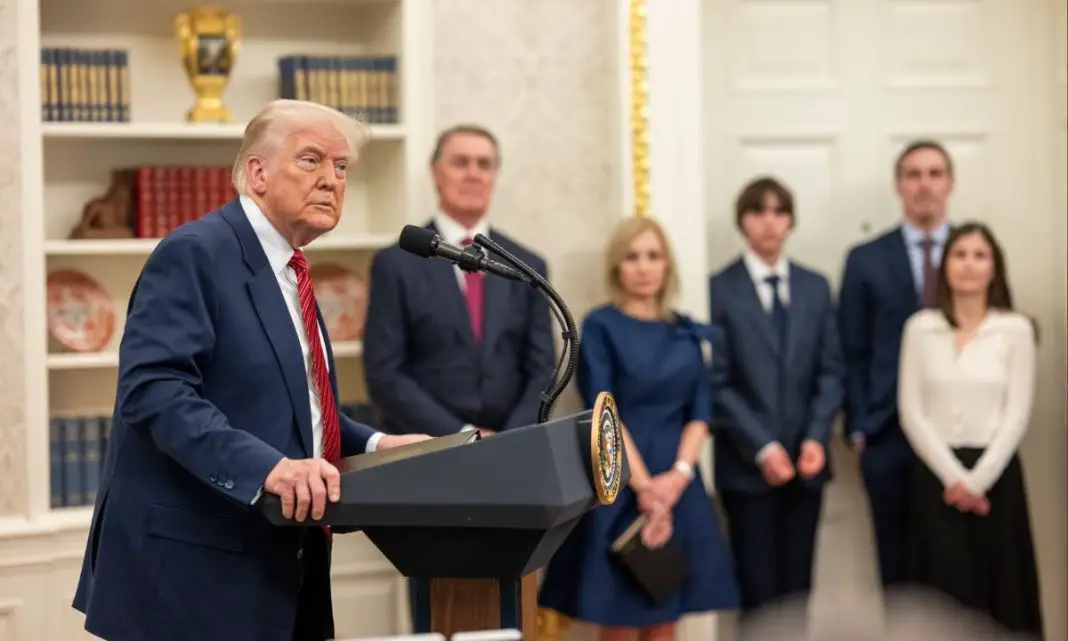A Temporary Thaw in U.S.-China Trade Tensions
On Monday, the United States and China brokered a 90-day ceasefire in their escalating trade war, dramatically reducing tariffs to ease economic strain. The U.S. agreed to cut its 145% tariff on most Chinese goods to 30%, while China slashed its rate from 125% to 10%, marking a combined reduction of over 100 percentage points.
“The relationship is very, very good,” President Trump told reporters at the White House, hinting at further discussions with Chinese President Xi Jinping.
“To me, the biggest thing that came out of that meeting is they’ve agreed to open up China.” The agreement, which includes a framework for ongoing talks, also addressed curbing fentanyl flows from China, according to a White House statement.
The deal sparked a surge in global markets, with the Dow Jones Industrial Average soaring over 1,000 points at the opening bell. U.S. Treasury Secretary Scott Bessent, fresh from high-stakes talks in Switzerland, emphasized a shared desire to avoid economic decoupling.
“The consensus from both delegations this weekend is neither side wants a decoupling,” he said. “What had occurred with these very high tariffs was an embargo, the equivalent of an embargo. And neither side wants that.”
This initiative aligns with the expectations of producers and consumers in both countries and serves the interests of both nations as well as the common interests of the world.
Negotiating Balance: Tariffs and Strategic Goals
While the truce slashed tariffs significantly—China’s Commerce Ministry noted a 91% cancellation and 24% suspension of duties—certain U.S. tariffs on cars, steel, and aluminum remain at 25%, with potential pharmaceutical duties still looming. Bessent clarified that the agreement avoids sector-specific tariff changes, focusing instead on broader trade balance.
“We want more balanced trade,” he told CNBC. “And I think that both sides are committed to achieving that.” He also pointed to past tensions, claiming the Biden administration failed to enforce a 2020 trade deal, which China’s delegation acknowledged during talks.
The Geneva discussions, the first in-person economic talks since Trump’s return to office and his aggressive tariff policies, followed China’s retaliatory 125% levies on U.S. imports. Bessent described the negotiations as “respectful” but cautioned that finalizing a permanent deal within 90 days would be challenging.
“This has been going on a long time,” he said, signaling that the next round of talks is likely within weeks.
Global Stakes: Markets and Supply Chains
The trade war’s ripple effects had rattled global markets, making Monday’s truce a critical step toward stability. China’s Commerce Ministry framed the deal as serving “the common interests of the world,” aligning with the needs of producers and consumers.
Meanwhile, the U.S. remains focused on addressing supply chain vulnerabilities in key sectors like semiconductors, medicines, and steel. “Both countries represented their national interest very well,” Bessent noted, highlighting a mutual commitment to balanced trade.
While the full economic impact of the tariff reductions remains uncertain, the agreement signals a pragmatic pause in hostilities.
With further talks pending, both nations face the challenge of translating this temporary reprieve into a lasting framework that stabilizes their economic relationship and mitigates disruptions to global trade.
Do you agree with the overall goal of the Trump tariffs on China and other countries? Let us know your thoughts in the comments below!

